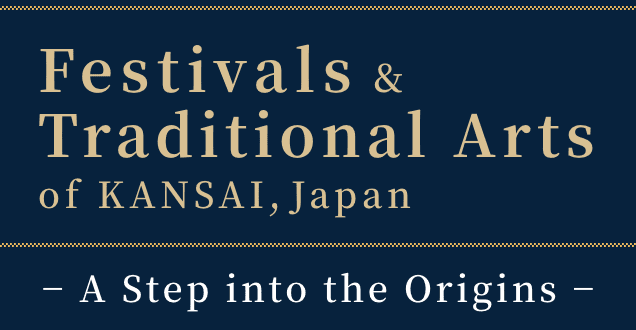
− A Step into the Origins −
Festivals & Traditional Arts of KANSAI, Japan
Kansai, the region that has been weaving the threads of its history since ancient times.
In the Kansai region, where various cultures have bloomed, there are festivals and dances that have been passed down for a long time.
Once you enter the region, you can feel the breath of people who continue to pass them down from the past to the present, and into the future.
Let’s begin a new journey to discover the origins of festivals and dances in Kansai.
Shiga Prefecture
Hikiyama Festival Children’s Kabuki
Children’s Kabuki is the highlight of the Hikiyama Festival, where children give charming performances that put adults to shame.

Kyoto Prefecture
Matsunoo-dera no Hotokemai
An ancient court dance that was originally introduced from China, but eventually lost.
The elegant Hotokemai lives on at Matsunoo-dera Temple.

Osaka Prefecture
Katanogahara Katanobushi
This traditional dance evolved from the Buddhist invocation dances of the Northern and Southern Courts Period. Loved by the commoners, the Katanogahara Katanobushi has been handed down orally over the generations, and is the origin of the famous Kawachi Ondo Bon Odori dance.

Hyogo Prefecture
Kami-cho no Sanbanso
The Sanbanso Dances of Kamicho
Facing the Sea of Japan, Kamicho, Hyogo is home to a coastline and beautiful natural scenery.
Dynamic, powerful dances of offering are performed in seven areas of the town.

Nara Prefecture
Shinohara Odori
Shinohara Dance
The elegant Furyu Dance popular late middle ages lives on in this dance among the innermost part of the Totsu-kawa River basin running through Gojo, Nara.

Wakayama Prefecture
Nachi no Dengaku
A ritual art that began more than 600 years ago and is performed at the Kumano Nachi Taisha Grand Shrine.
The nimblelight dancing in tune with the flutes is reminiscent of the middle ages, when the Dengaku was popular.

Tottori Prefecture
Kirin Jishi Mai
A traditional dance performed to bring good health, handed down in the eastern part of Tottori Prefecture since the Edo Period.
The Kirin Jishi, clad in bright red, brings good fortune to everyone it meets.

Tokushima Prefecture
Awa Odori
A light musical accompaniment and dancers combine to create an exciting atmosphere.
Experience the intensity of the Awa Odori and its 400 years of history in Tokushima.

Kyoto City
Yasurai-Bana
An unusual, brilliant, and splendid Kyoto festival offering a prayer to ward off disease that has been carried on for over 1,000 years.

Osaka City
Tennoji Bugaku (Shoryo-e Bugaku)
An ancient bugaku dance that is flamboyant and sometimes valiant, soothing the spirit of Prince Shotoku, the founder of Japanese Buddhism.







